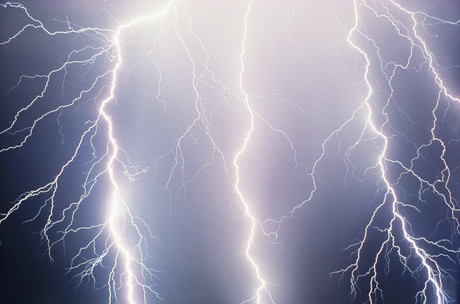Change your energy, charge your life
By Jamie Allen, Business Manager, Australia and Pacific at LG Chem
Monday, 20 February, 2017

Difficult times call for different measures; for sustainable actions. No matter what your opinion of renewable energy is, there’s no denying that renewable solutions have firmly established their place within the energy market.
Consumers are becoming more savvy with their energy consumption, but during peak times they are still crippled by an increased demand on networks (eg, summer and winter). However, home owners and businesses have the option to take back control of their energy use and go partially off-grid. Using the power generated by solar panels, businesses and consumers can store energy for later use, thanks to energy storage systems (ESSs). It has never been a better time for consumers and businesses to change how they consume energy to ensure a sustainable energy future.
Queensland, the Sunshine State
Beautiful one day, perfect the next — that’s Queensland1. It’s no wonder they call it the sunshine state, three of the country’s top cities for average total days with sun are located within its borders; Rockhampton — 272 days, Toowoomba — 255 days and Townsville — 264 days2. But to put it in even more perspective, Townsville gets 3139 hours of sunshine per year, Mackay gets 2993 hours while Brisbane receives 2884 hours3. That’s a lot of sunshine. With all that sunshine comes the potential for power.
Queensland already has the largest number of solar PV installations of any state, followed by New South Wales and Victoria. A state expert panel in a recent draft report said that solar will challenge coal as the biggest single source of electricity in the state by 2030 as part of its 50% renewable energy target.
But having said that, Queensland is reported to have some of the highest electricity tariff prices in the country and will soon adopt the smart meter system where consumers may be charged more during peak times, such as 4 to 9 pm. (Many others states have already adopted and implemented this method.)
Forget the feed-in-tariffs incentives
The incentive of feed-in-tariffs (FiT) is not what it used to be. When the scheme was first introduced in Queensland, consumers were offered 44c/kWh, but that has dropped significantly for customers to 8c/kWh4. Queensland is now only offering between 0c/kWh to 7c/kWh FiT to new customers, thus removing that instant lure. Queensland is the fastest growing state in the country attracting residents from all over the world thanks to its climate and lifestyle, but with that comes increasing infrastructure pressures, higher demands on the grid and consumer electricity price increases to pay for the required network infrastructure.
1.7 million residents in South Australia were left without power last year following what was described as the ‘perfect storm’. Along with the unpredictability of mother nature and her ability to cripple power supplies for an undisclosed amount of time, the incident also demonstrated that despite the force and fury of mother nature, consumers don’t have to be slaves to the grid and can be self-sufficient thanks to ESSs. In times of power crises, homes and businesses could still function without power outage disruptions.
The solution to end all solutions
Converting your home to become energy independent is a smart long-term financial investment. Not only is it great for the environment, it provides the opportunity to lock in the price of your own generated energy now and take control of rising electricity usage costs. ESSs provide the additional benefit of blackout protection.
Renewables also provide a unique energy solution for Queensland businesses. With increasing inclement weather conditions threatening the operations of organisations, it has never made more sense for businesses to have a solar system with backup power supply. Through the installation of solar energy storage units, businesses could ensure that they can continue to run as usual even in the event of a blackout. For some businesses loss of power for extended periods could be devastating — by incorporating an ESS, businesses can protect themselves from these unpredictable events, while saving money and using sustainable energy solutions.
1. http://www.queensland-australia.com/
2. https://www.currentresults.com/Weather/Australia/Cities/sunshine-annual-average.php
3. https://www.currentresults.com/Weather/Australia/Cities/sunshine-annual-average.php
4. http://www.solarchoice.net.au/blog/when-do-feed-in-tariffs-end-NSW-QLD-VIC-ACT-TAS-SA-WA-NT
Dirty dancing across a new energy landscape
The real-time balancing of electricity generation (supply) and demand is like a dynamic dance and...
Digitising Australia's buildings is key to tackling net zero
Businesses around the world are continuing to focus on net zero, and building construction and...
Ausgrid steps closer to net zero using 'blue gas' switchgear
Ausgrid is using Siemens' blue gas insulated (GIS) medium-voltage switchgear, which uses...











